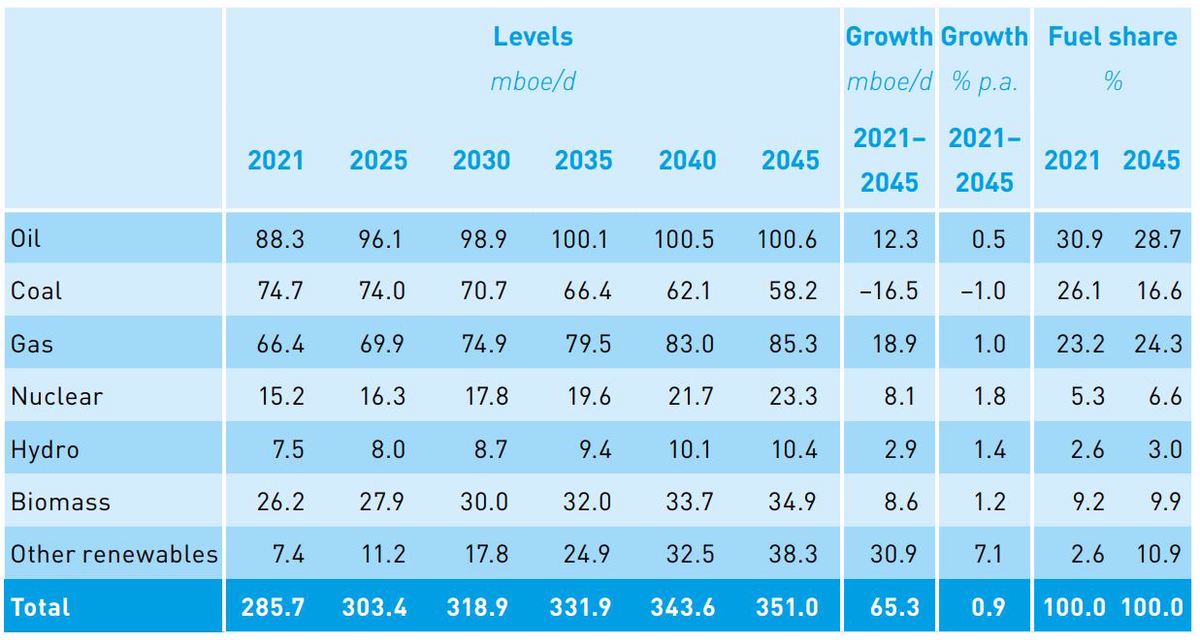Oil demand growth to plateau after 2035 – OPEC
OPEC predicts the global oil demand to rise from around 97 million b/d in 2021 to 109.5 million b/d by 2035 in its annual world oil outlook report.

CHART: Global oil demand by product, 2021–2045. OPEC
It estimates demand at only 110 million b/d in 2045, signalling a stagnation in growth after 2035. OPEC's projection is largely in line with the International Energy Agency's forecast of oil demand plateauing in mid-2030s before ebbing slightly to mid-century.
According to OPEC, this “relatively long period of plateauing oil demand” will mostly be driven by technological advances and policies aimed at diversifying the energy supply.
Addressing global supply constraints, OPEC's Secretary General Haitham Al Ghais suggests adding an average of 2.7 million b/d of crude oil annually between now and 2045 to “place the future energy demand in context.” This will require an additional investment of $500 billion/year by 2045, amounting to approximately $12.1 trillion, he adds.
He highlights that underinvestment in global oil industry is mainly because of industry downturns, the COVID-19 pandemic, and policies to end fossil fuel project financing.
Meanwhile, the report forecasts oil to remain the primary fuel of choice worldwide, making up almost 29% of the total energy demand. Oil and gas are expected to maintain a combined market share of over 50% until 2045, it says.
Renewable energy including nuclear, hydro, biomass will make up around 30.4% of the primary energy demand by 2045.

CHART: World primary energy demand by fuel type, 2021-2045. OPEC
OPEC expects the global oil demand in non-OECD countries to grow by nearly 24 million b/d between now and 2045, with India adding around 6.3 million b/d. But demand growth in OECD countries is forecast to decline by more than 10 million b/d by 2045.
The report underlines high level of uncertainty regarding global oil supply amid concerns over fragile economic growth, geopolitical tensions, and perceived shortfalls in upstream investment.
It forecasts Russian crude supply to decline by 700,000 b/d, and US crude supply to peak by the end of this decade.
By Konica Bhatt
Please get in touch with comments or additional info to news@engine.online





